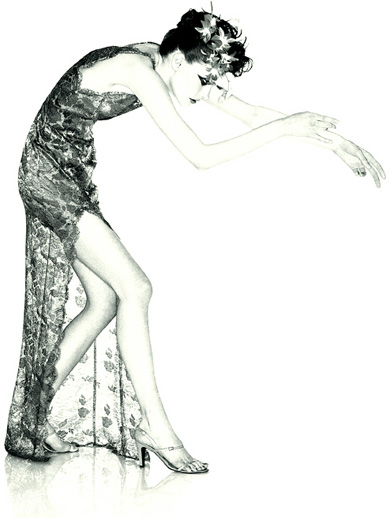
fotohits magazine
-
Vor 13 Jahren kam Michael Cuno aus Deutschland in Kalifornien an, ausgestattet mit zwei Koffern und dem Ziel, ein Profi-Fotograf zu werden. Hinter sich liess er ein Studium der Wirtschaftswissenschaften, dass mehr Pflicht als der Neigung geschuldet war. Mit ihm hatte er die Sorgen seiner Eltern besaenftigt, die ihn finanziell abgesichert sehen wollten. Der Neigung folgend hatte er danach einigen Fotografen in Europa assistiert, doch absolvierte er fuer seinen Geschmack zu viele Architekturaufnahmen. Allerdings verschlechterten sich die Chancen fuer seinen Traum aufgrund der Tatsache, dass damals die Fachhochschule Dortmund einen Quereinsteiger fuer den Studiengang Fotografie nicht zuliess. Angesichts der Schwierigkeiten musste eine Entscheidung getroffen werden. Sie fiel spontan, als ihm Ein Freund vom amerikanischen Brooks Institute of Photography erzaehlte. Die USA hatte ihn ohnehin immer fasziniert. Und wer moechte nicht dem grauen Leben in Deutschland entfliehen, wie Cuno rueckblickend fragt. Also fand er sich kurze Zeit Spaeter unter kalifornischer Sonne in Santa Barbara wieder. Einfach war sein weiter Weg nicht. Die Sprachbarriere etwa tuermt sich fuer jeden auf, der mit dem normalen Schulenglisch auskommen muss. Sie wurde bewaeltigt, indem einfach die Untertitel beim Fernsehen einschaltete. Irgendwann lief dann auch die Verstaendigung mit anderen Kommilitonen einfacher. Und schliesslich bleibt man In Kalifornien nur kurze Zeit ein Fremder, wie Cuno feststellte. Wegen der vielen internationalen Studenten findet ein reger Austausch statt, der ihm ein ganz anderes Studium als in Deutschland ermoeglichte. Langsam ergaben sich auch Kontakte zu Models, zu Stylisten und zu Agenturen. Und schliesslich wurde eine freie Arbeit vom renommierten Modemagazin Harper’s Bazaar Espanol angenommen, weitere Auftraggeber folgten wie Vogue en Espanol, Mens Health, Polygram Records, Sony Classics oder Universal Records.
Die gezeigten Fotos enstammen den beiden Serien “Black Deluxe” und “Shell Shock”. Schon ihre Produktion ist bemerkenswert: Cuno arbeitet vollstaendig analog. Seine Filme sind von Kodak und Fujifilm, dazu kommt eine Grossformatkamera des Traditionsunternehmens Linhof und eine Mittelformatkamera von Mamiya. Dies ist nicht selbstverstaendlich, da mittlerweile zahlreiche Fotografen auf digitale Modelle umgestiegen sind. Jedoch ist der finanzielle Aufwand fuer denWechsel enorm. Um dieselbe hohe Aufloesung eines Mittelformatfilmes zu erreichen, muss man einige tausend Euro beispielsweise fuer ein digitales Rueckteil investieren. Auch sillistisch geht Cuno seinen eigenen Weg: Fuer die bunte Modewelt ungewoehnlich verwendet er gerne Schwarzweiss. “Farbe nimmt dem Bild manchmal etwas weg. Doch Schwarzweiss bringt es auf den Punkt”, wie er sagt. Allenfalls eine Sepia-Toenung fuegt er ihnen hinzu, die in handwerklicher Tradition durchgefuehrt wird: In der Dunkelkammer toent und bleicht er spezielles Fotopapier. Nur falls er beispielsweise kleine Verbesserungen an den Hauttoenen vornehmen will, scannt er das Ergebnis ein und bearbeitet es in Photoshop. Solche Faehigkeiten kann Cuno zufolge jeder im Selbststudium erwerben. Doch wie bei der Malerei ist es mit dem Handwerk nicht getan, wenn die Ideen fehlen. Der Serie von Maennerportraits auf diesen Seiten mit dem Titel“Shell Shock” (englisch fuer Schuetzengraben-Trauma) ist nicht anzumerken, wie schnell sie umgesetzt werden mussten. Cuno blieb nach dem Anruf des Auftraggebers nur eine Nacht. Das Ergebnis: Trotz martialischem Titel und knapper Zeit entstanden ausgewogene Kompositionen aus Koerpern und Licht.
about
-
Not for him was the world of high finance, says Michael
Cuno, a photographer whose haunting images capture the "romance
and beauty of dreams". "I was bored with business, and I
couldn't see the rest of my life behind a desk." Michael
traded the office cubicle for the artists studio, turning
to a childhood passion for his chosen path --- photography.
He studied the masters, Sarah Moon, Paolo Roversi, Peter Lindbergh, and apprenticed with Tomas Riehle and Joachim Richter before leaving Europe to attend classes in the United States, making stops at the Brooks Institute of Photography and Art Center College of Design.
Michael decided to test his skills in the market place, landing work with Harper's Bazaar (Latin America), Vogue en Espanol, Vogue Pelle, Black Book Magazine, Essence Magazine, Men's Health, Soma... and Polygram Records, Sony Classics, Universal Records, Profile Records and the Nai-Ni Chen Dance Company are Several of his more recent clients.
He also attracted interest from many of the top advertising agencies, like J Walter Thompson (Thermasilk) and Neiman Marcus (The Book and Direct). For the easy going, people-oriented Cuno, the old axiom, "less is more" is key. "I am a simple man," he says. " I find pleasure and beauty in the simple things in life." Simple things like stark, penetrating eyes that peer from a luminescent, shadow-framed face, Rembrandt-like in its imagery.
"Michael's work is moody and mysterious, playful and dramatic," according to Carla Leighton, art director for Gloo Design.
A Cuno photo stays with you, and Kerry Fitzgerald, Editor At Large For Gentlemen's Options (Italy) knows why: "I would say that Michael is in a small class of young photographers that really understand light, and believe me is over half the battle for taking great images."
Credit: Michael
Horowitz, Freelance writer
